Beekeeping in Saudi Arabia presents a unique and promising opportunity for those seeking to venture into the world of apiculture. In this arid yet fertile land, the art of honey bee farming can flourish, offering the delicious golden nectar of honey and a sustainable and profitable business endeavor. One must delve into setting up a beehive, understanding the costs involved, navigating the legalities, and securing the necessary permissions to embark on this journey.
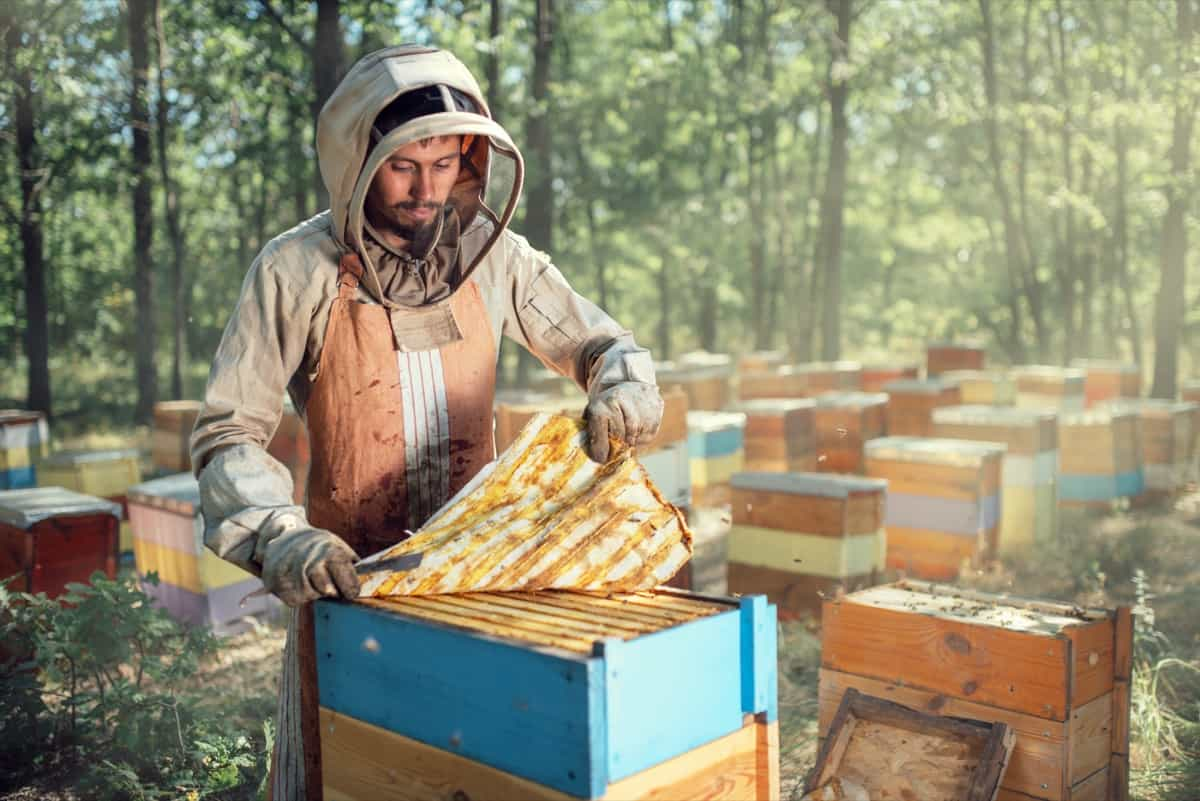
Beekeeping in Saudi Arabia
Introduction
Beekeeping in Saudi Arabia is a popular and profitable activity with many opportunities and challenges. According to FAO, there are about 16,000 honey producers nationwide, but only 26% of the demand is satisfied locally. The rest is imported from other countries. Beekeeping in Saudi Arabia is mainly concentrated in the southwest regions of Taif, Baha, and Asir, where there is diverse and abundant bee forage.
However, beekeepers need help with problems such as pests, diseases, climate change, and the need for modern technology. Beekeepers must adopt improved practices and methods based on scientific research and development to improve the quality and quantity of honey production.
Market Research for Beekeeping in Saudi Arabia
Beekeeping is a popular and profitable activity in Saudi Arabia, where honey is highly valued for its cultural, religious, and medicinal properties. The country has a diverse bee flora and a strong demand for local honey, which fetches high prices in the market. However, beekeeping faces many challenges, such as low adoption of improved technologies, pests and diseases, climate change, and competition from imported honey.
Types of Bees Available for Beekeeping Business in Saudi Arabia
The most common type of bee used for beekeeping in Saudi Arabia is the indigenous Apis mellifera jemenitica, which is well adapted to the arid conditions and produces high-quality honey from plants such as Ziziphus and Acacia.
Other types of bees that are available for beekeeping include Apis mellifera carnica, Apis mellifera ligustica, and Apis cerana, which have been introduced from other countries and regions. Each type of bee has advantages and disadvantages regarding productivity, disease resistance, temperament, and management requirements.
In case you missed it: Tilapia Fish Farming in Saudi Arabia: Business Plan, How to Setup Ponds and Tanks for Tilapia
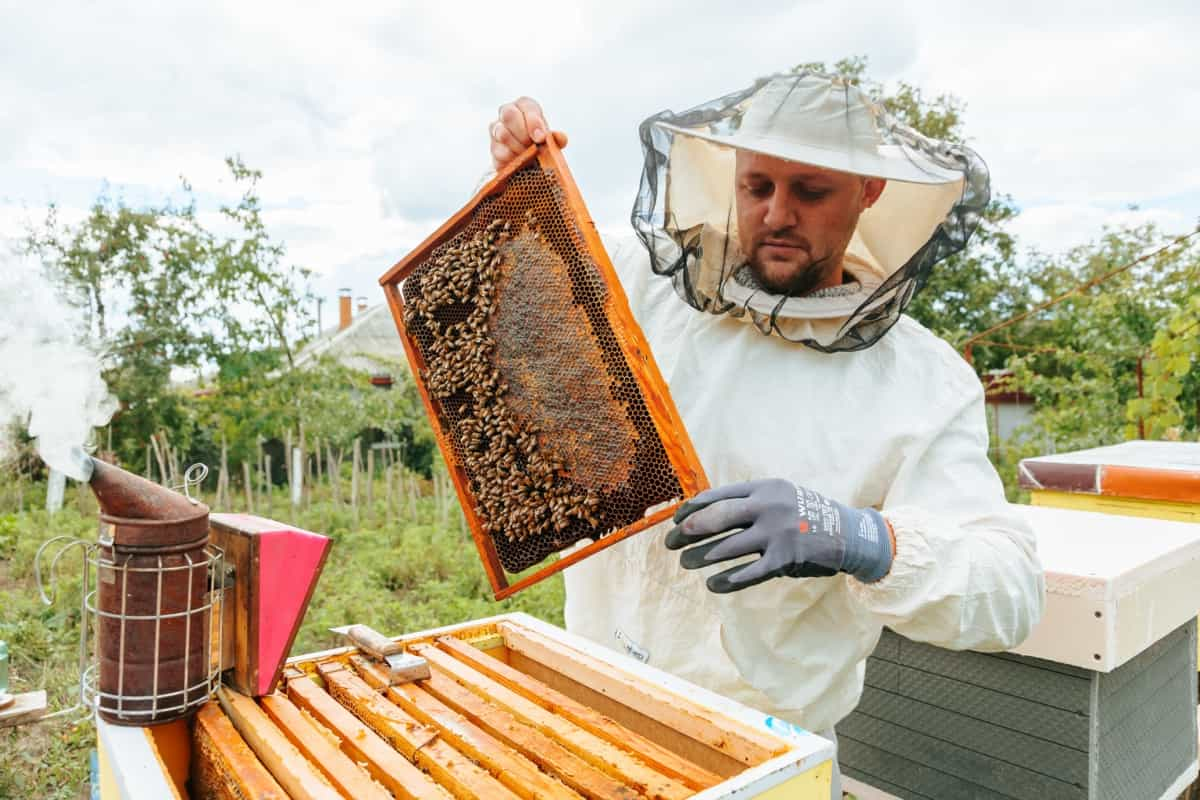
Business Plan for Beekeeping in Saudi Arabia
Starting a honey beekeeping business in Saudi Arabia holds immense promise as apiculture, the art of producing honey bees commercially, gains momentum globally. This endeavor offers many opportunities, including honey production, beeswax, and other bee-derived products. It extends to the role of crop pollination services and the sale of bees to fellow beekeepers. With the growing demand for natural sweeteners, beekeeping has become a lucrative choice for small- and large-scale farmers.
Before embarking on this journey, several critical factors must be considered. Begin by assessing your available resources, which will ultimately determine the size of your beekeeping project, including the number of bee hives or colonies. Location is pivotal, as it affects the success of your beekeeping venture. Proximity to nectar and pollen sources is essential, as they play a crucial role in honey production and brood rearing.
When selecting a location, factors such as water availability, climate, forage, and protection from predators should be considered. The chosen site should provide a consistent supply of pollen and nectar from various plants. Additionally, the land should have superior air drainage and be free from pesticides harmful to bees. Acquiring or renting the land should be factored into your beekeeping business plan.
Choosing the right beehives is equally vital. Various hive types, such as Langstroth hives, Warre hives, and Top Bar Hives, are available. Each has advantages, and your choice should align with your project’s needs. Beehives are typically constructed from wood, offering durability and temperature regulation. Ensure that the cost of purchasing the beehives is included in your business plan. In terms of equipment, you’ll need frames, a smoker, protective gear, feeders, and hive tools. The cost of this equipment should be part of your financial planning.
Acquiring bee colonies is fundamental to beekeeping. You can purchase colonies from reputable producers, ensuring the bees are healthy and of a specific breed. A colony consists of a queen, drones, and worker bees, each with distinct roles in the hive. The number of bee hives or colonies you acquire will determine the size of your beekeeping business, and these costs should be incorporated into your business plan.
Feed and nutrition are essential for your beekeeping success. Bees require carbohydrates, amino acids, lipids, vitamins, minerals, and water to thrive. While they can self-feed from available flowers, supplementary feeding may be necessary in certain circumstances.
In case you missed it: National Beekeeping and Honey Mission (NBHM): Features, Schemes, and Benefits
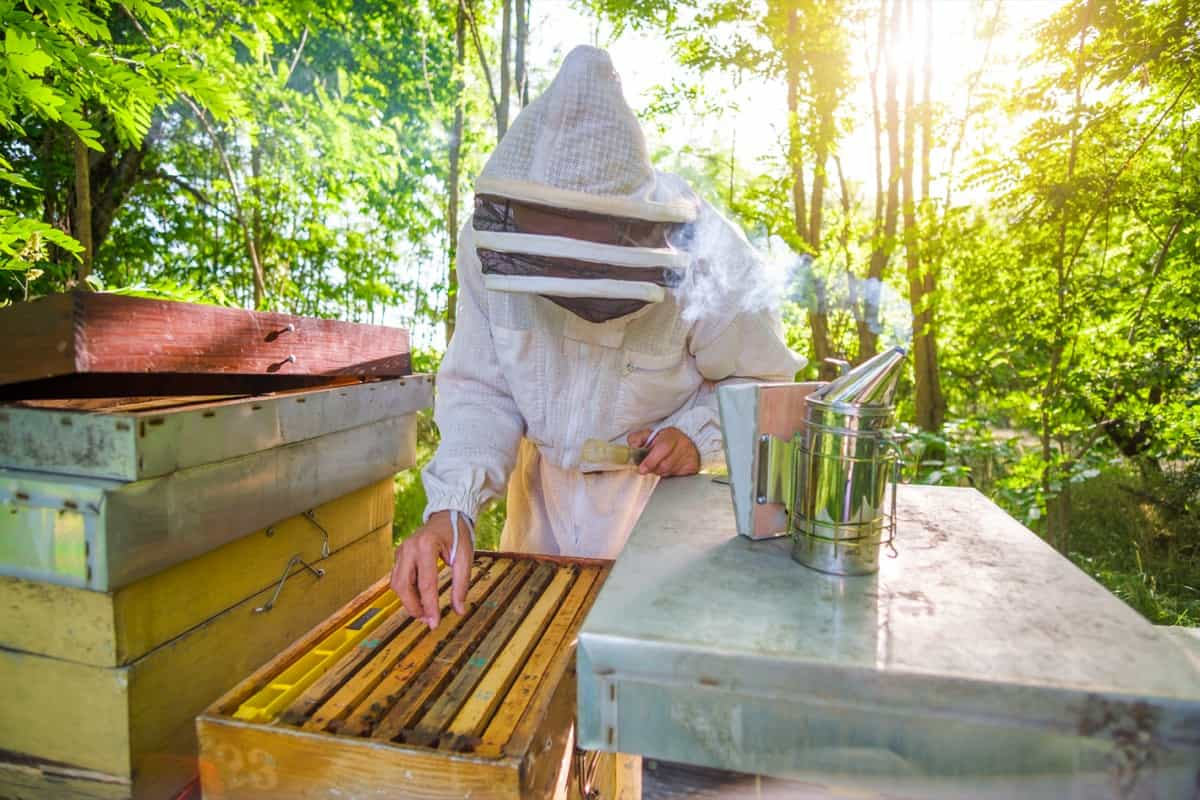
Labor requirements depend on your project’s scale, with beekeepers responsible for hive management, feeding, monitoring, harvesting, and packaging. Be sure to factor in the labor costs in your business plan.
Capital needs vary depending on the project’s size. You can seek funding from banks or investors, start small, and reinvest profits to grow your business. A well-structured beekeeping business plan is essential for securing loans or attracting investors.
The primary product of your beekeeping business is honey, and the market for honey is extensive. Potential customers include individuals, supermarkets, wholesalers, restaurants, and organizations. Developing a robust marketing strategy is crucial and should be integrated into your business plan.
Set-up Cost for Beekeeping in Saudi Arabia
The cost of beekeeping in Saudi Arabia depends on different factors, such as the number of colonies, the type of bees, the location of the hives, and the quality of the honey. The average price of imported package bees is USD 30-40 per colony. At the same time, the indigenous Arabian honeybee is more adapted to the local climate and can produce honey with anti-cancer properties.
The honey produced in Saudi Arabia can sell for up to USD 500 per kilogram in neighboring Gulf states, making it a lucrative economic activity. However, beekeeping also requires investment in equipment, training, transportation, and pest control.
| Item | Cost/Revenue Range (USD) |
| Initial Cost of One Colony | $30-40 |
| Annual Maintenance Cost of One Colony | $20-30 |
| Average Honey Yield per Colony (kg) | 15-20 |
| Average Honey Price per kg | $100-500 |
| Gross Revenue per Colony | $1,500-10,000 |
| Net Revenue per Colony | $1,450-9,950 |
Profit Margin for Beekeeping in Saudi Arabia
Beekeeping proves to be profitable in Saudi Arabia, driven by high honey consumption and favorable environmental conditions. Beekeepers using traditional box hives report an average net annual income of around 33,699.7 Saudi Riyals. By embracing modern beekeeping technologies, beekeepers have the potential to increase their earnings significantly, with estimates reaching up to 100,000 Saudi Riyals annually.
However, beekeeping in Saudi Arabia confronts various challenges, including pests, diseases, temperature fluctuations, and a need for more training and support services. To address these issues, King Khalid University researchers are actively working on enhancing the health and productivity of the native Arabian honeybee. Moreover, they are committed to providing training and support to beekeepers, imparting the latest beekeeping methods.
License and Permissions Required for Beekeeping in Saudi Arabia
Beekeeping in Saudi Arabia, you need to obtain a license and follow some regulations. By Ministry of Environment, Water and Agriculture, you need to register your apiary, avoid overcrowding, use modern hives, and ensure the health and safety of your bees. You also need to comply with honey production and marketing standards and label your products correctly.
In case you missed it: Buzzing Towards Success: Creating a Comprehensive Beekeeping Business Plan
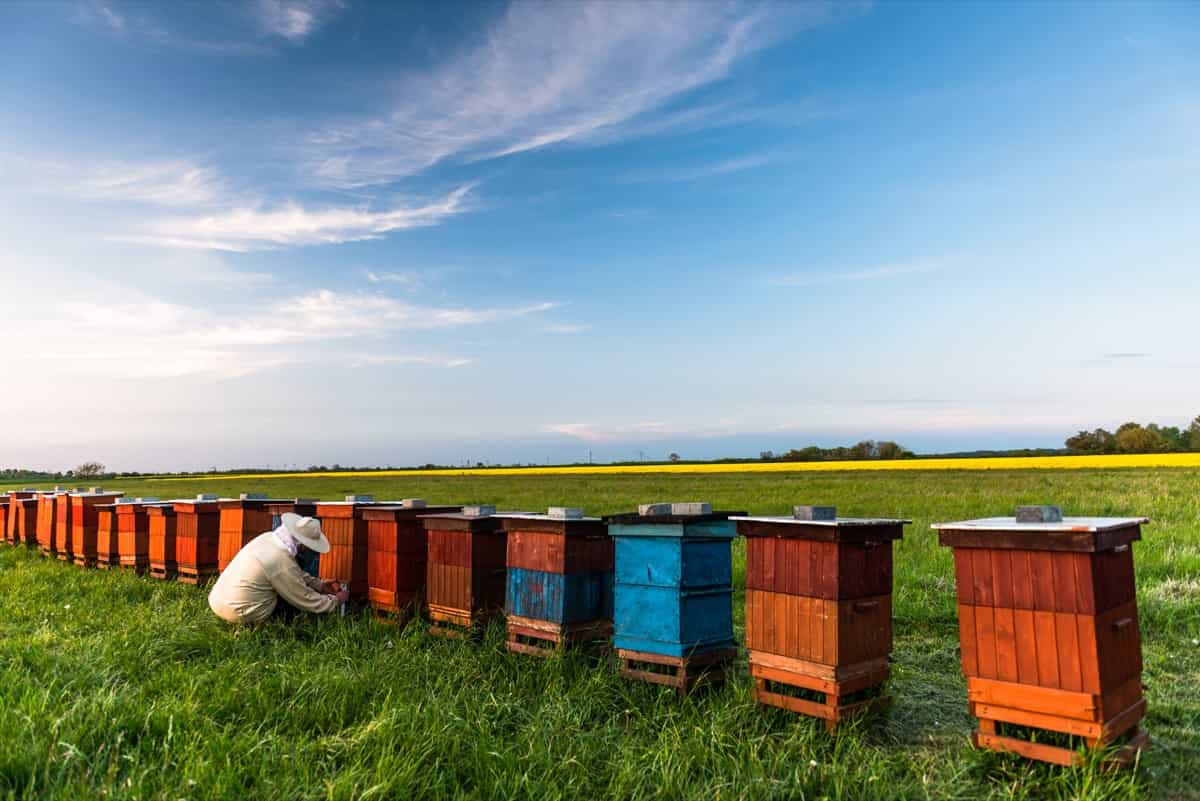
Beekeeping is a popular and profitable activity in Saudi Arabia, especially in the regions of Taif, Baha, and Asir, where the climate and vegetation are suitable for honey bees. You can benefit from the high demand and price of local honey and the support and training provided by various institutions.
Rules and Regulations for Beekeeping in Saudi Arabia
- Beekeeping is a popular and profitable activity in Saudi Arabia, especially in the southwestern regions of Taif, Baha, and Asir, where the climate and vegetation are suitable for honey production.
- Beekeepers must register their apiaries with the Ministry of Environment, Water, and Agriculture and obtain a license for beekeeping.
- Beekeepers must use modern hives and equipment that meet the ministry’s standards and facilitate inspection and management.
- Beekeepers must keep their apiaries clean and free from pests and diseases and report suspicious cases to the ministry.
- Beekeepers must not use prohibited substances or chemicals on their bees or honey, such as antibiotics, pesticides, or artificial sweeteners.
- Beekeepers must label their honey products with accurate information, such as the source, origin, date, and weight of the honey, and comply with the quality specifications of the ministry.
- Beekeepers must respect the rights and interests of other beekeepers and avoid any conflicts or disputes over bee forage or apiary locations.
Best Practices for Beekeeping in Saudi Arabia
Choosing the Right Location: Select an appropriate location for your apiary. Ensure proximity to nectar and pollen sources, proper air circulation, and protection from extreme conditions. Access to water nearby is crucial for your bees.
Selecting Bee Hives: Choose suitable beehives for your project. Common options include Langstroth, Warre, and Top Bar hives. Ensure they are made of durable, painted wood to regulate temperature and last longer.
Equipment and Supplies: Invest in essential equipment like wooden frames, a smoker, a veil, gloves, a bee suit, gumboots, feeders, and a hive tool set. Also, have honey processing equipment, including storage containers, a refractometer, a centrifuge honey extractor, and a honey press.
Acquiring Bee Colonies: Obtain your bee colonies from reputable and accredited breeders. Consider factors like temperament, manageability, color, productivity, and disease resistance of the queen bee when selecting.
Feeding and Nutrition: Ensure your bees have access to proper nutrition. Bees mainly collect nectar, pollen, water, and propolis. While feeding may be necessary in specific cases, it should be used sparingly.
In case you missed it: 17 Key Rules for Effective Beekeeping Management: Basic Tips for Profitable Honeybee Farming
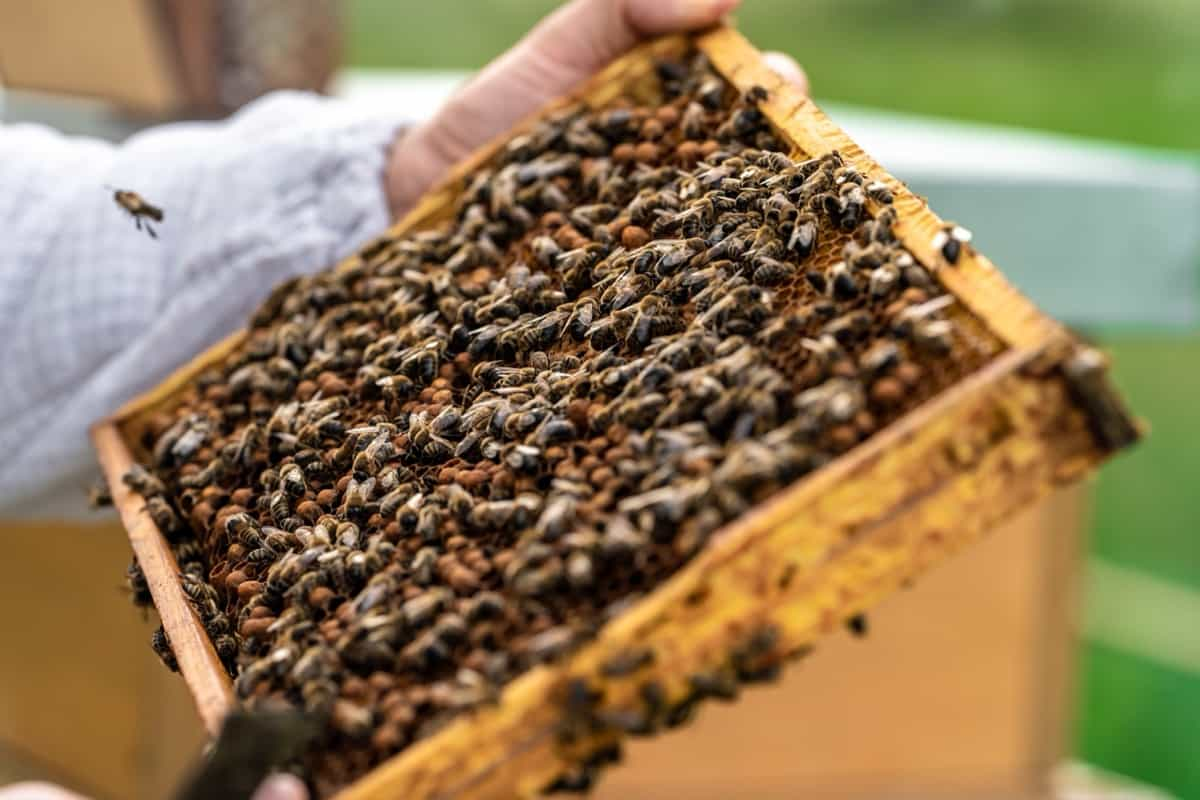
Labor Requirements: Depending on the scale of your beekeeping, employ beekeepers to manage hives, feed bees, monitor the apiary, and handle honey harvesting and packaging.
Capital Investment: Determine the capital needed for your beekeeping business. This can come personal savings, loans, or investments. A well-structured beekeeping business plan is essential for financial guidance.
Market Strategy: The primary product of your beekeeping business is honey, which has a wide market. Identify potential customers such as individuals, supermarkets, wholesalers, restaurants, and organizations. Develop a comprehensive marketing strategy in your business plan.
Beekeeping Equipment and Supplies in Saudi Arabia
Essential beekeeping equipment, including modern beehives, honey extractors, storage tanks, organic beeswax foundation sheets, queen excluders, nuclei boxes, smokers, and tools for queen rearing, are supplied as Sustainable Rural Agricultural Development.
Beekeeping Associations and Organizations in Saudi Arabia
Saudi Arabian Beekeeping Association (SABA): SABA is a prominent organization dedicated to advancing beekeeping in Saudi Arabia. They provide resources, training, and guidance to beekeepers to improve the quality and quantity of honey production.
Saudi Honeybee Research Association (SHRA): SHRA focuses on research and development in the beekeeping sector. They work on enhancing bee health, exploring sustainable beekeeping practices, and addressing diseases and pests affecting honeybee colonies.
Sustainable Rural Agricultural Development (SRAD) Project: While not a traditional association, SRAD is a crucial initiative in Saudi Arabia that supports beekeepers through training programs, extension services, and modern beekeeping equipment and practices.
Local Agricultural Offices: Various agricultural offices and agencies across the country offer guidance and support to beekeepers. They can provide information on regulations, licenses, and best practices.
Beekeeping Training in Saudi Arabia
Saudi Arabia implements modern technologies and practices to improve honey production and quality. The FAO and Ministry of Environment, Water, and Agriculture provide training and equipment to selected model beekeepers in six regions to improve their knowledge and skills. The training covers organic beekeeping, honeybee queen rearing, colony multiplication, pest prevention, and honey extraction.
Bee Diseases and Pests in Saudi Arabia
Common issues include Varroa mites, which can weaken bees and transmit diseases, and Nosema, a gut parasite. Additionally, American Foulbrood and European Foulbrood are bacterial diseases that can devastate hives. Beekeepers in the region must remain vigilant in monitoring these threats and employ effective pest management and disease control measures to ensure the well-being of their bee colonies and maintain honey production.
Opportunities and Challenges in Beekeeping in Saudi Arabia
- High honey consumption and demand in local and regional markets.
- Favorable climate and diverse flora for honey production.
- Government initiatives and support for beekeeping.
- Export potential for premium Saudi honey.
- Bee diseases and pests.
- Lack of modern beekeeping practices.
- Limited training and education.
- Traditional beekeeping methods.
- Fluctuating honey prices.
Frequently Asked Questions (FAQ) on Beekeeping in Saudi Arabia
Best Regions for Beekeeping
The best regions for beekeeping in Saudi Arabia are Taif, Baha, and Asir mountain regions. These areas have diverse bee forage plants, providing ample nectar and pollen throughout the year.
Ideal Bee Types for Saudi Arabia?
The best bee species for Saudi Arabia are the local Arabian honey bee (Apis mellifera jemenitica) and the imported Carniolan honey bee (Apis mellifera carnica). They are well-suited to the climate and floral resources and exhibit resistance to common bee diseases and pests.
In case you missed it: Bee Farming in South Africa: How to Start, Beekeeping Cost, and Profit
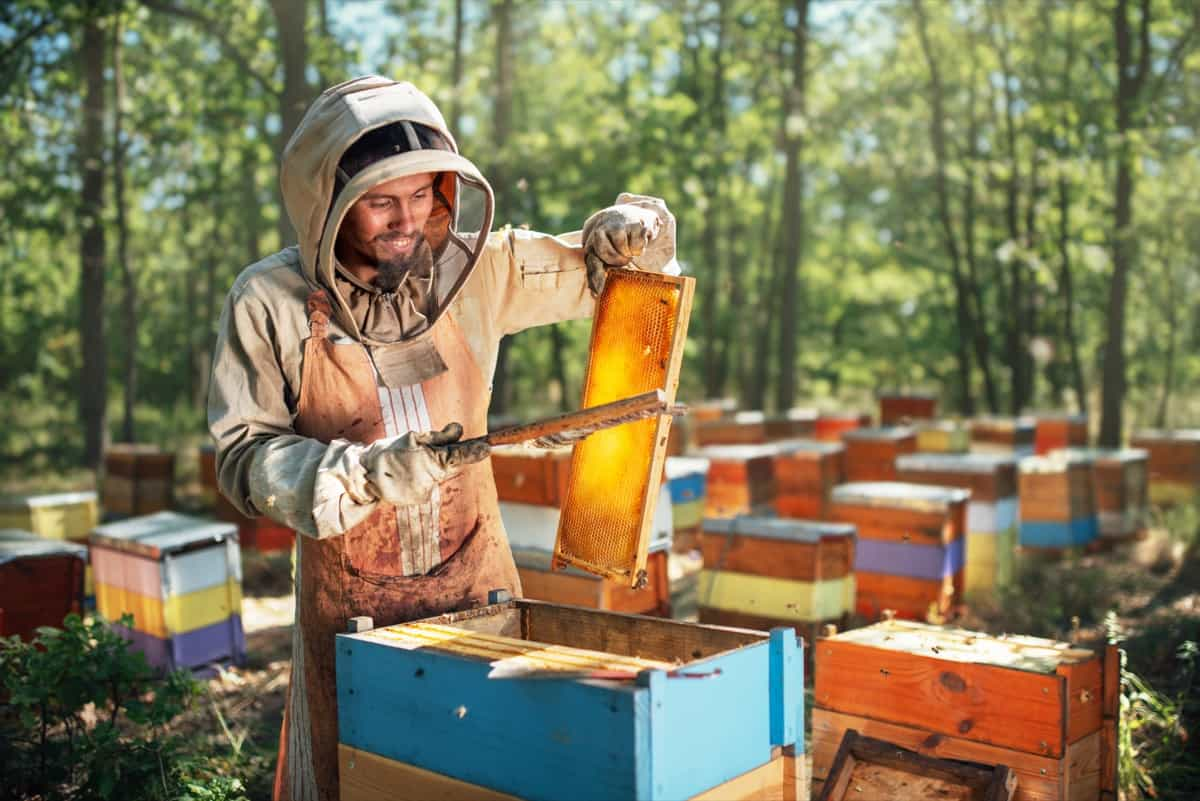
Earnings in Beekeeping?
Earnings in beekeeping depend on factors like honey quantity and quality. Revenue and expenses, including setup, maintenance, harvesting, and marketing costs, impact your profits. On average, beekeeping businesses in Saudi Arabia can achieve a profit margin of about 40%.
Is Beekeeping Profitable in Saudi Arabia?
Yes, beekeeping is profitable in Saudi Arabia due to high local demand for honey, which exceeds production. Local honey can fetch good prices, and the average yield per hive is about 35 kg annually. While setup costs can vary, beekeepers can expect favorable returns on their investment.
Conclusion
Beekeeping in Saudi Arabia presents a sweet opportunity. With the right plan, equipment, and dedication, beekeepers can find a thriving market and contribute to the country’s growing honey industry.
- Types of Pesticides Used in Agriculture: A Beginner’s Guide
- Economical Aquaculture: A Guide to Low-Budget Fish Farming
- 15 Common Planting Errors That Can Doom Your Fruit Trees
- How to Make Houseplants Bushy: Effective Tips and Ideas
- Innovative Strategies for Boosting Coconut Pollination and Yield
- Pollination Strategies for Maximum Pumpkin Yield
- The Complete Guide to Chicken Fattening: Strategies for Maximum Growth
- Natural Solutions for Tulip Problems: 100% Effective Remedies for Leaf and Bulb-Related Issues
- Revolutionizing Citrus Preservation: Towards a Healthier, Greener Future
- Natural Solutions for Peony Leaf and Flower Problems: 100% Effective Remedies
- Maximizing Profits with Avocado Contract Farming in India: A Comprehensive Guide
- Natural Solutions for Hydrangea Problems: 100% Effective Remedies for Leaf and Flowers
- The Ultimate Guide to Choosing the Perfect Foliage Friend: Bringing Life Indoors
- From Sunlight to Sustainability: 15 Ways to Use Solar Technology in Agriculture
- The Ultimate Guide to Dong Tao Chicken: Exploring from History to Raising
- The Eco-Friendly Makeover: How to Convert Your Unused Swimming Pool into a Fish Pond
- Mastering the Art of Delaware Chicken Farming: Essentials for Healthy Backyard Flocks
- 20 Best Homemade Fertilizers for Money Plant: DIY Recipes and Application Methods
- How to Craft a Comprehensive Free-Range Chicken Farming Business Plan
- Brighten Your Flock: Raising Easter Egger Chickens for Beauty and Bounty
- How to Optimize Your Poultry Egg Farm Business Plan with These Strategies
- Subsidy for Spirulina Cultivation: How Indian Government Schemes Encouraging Spirulina Farmers
- Ultimate Guide to Raising Dominique Chickens: Breeding, Feeding, Egg-Production, and Care
- Mastering the Art of Raising Jersey Giant Chickens: Care, Feeding, and More
- Ultimate Guide to Raising Legbar Chickens: Breeding, Farming Practices, Diet, Egg-Production
- How to Raise Welsummer Chickens: A Comprehensive Guide for Beginners
- How to Protect Indoor Plants in Winter: A Comprehensive Guide
- Ultimate Guide to Grow Bag Gardening: Tips, Tricks, and Planting Ideas for Urban Gardeners
- Guide to Lotus Cultivation: How to Propagate, Plant, Grow, Care, Cost, and Profit
- Agriculture Drone Subsidy Scheme: Government Kisan Subsidy, License, and How to Apply Online
- Ultimate Guide to Raising Araucana Chickens: Breed Profile, Farming Economics, Diet, and Care
- Bringing Hydroponics to Classroom: Importance, Benefits of Learning for School Students
- Ultimate Guide to Raising Polish Chickens: Breed Profile, Farming Economics, Diet, and Care
- Ultimate Guide to Raising Australorp Chickens: Profile, Farming Economics, Egg Production, Diet, and Care
- Silkie Chicken Farming: Raising Practices, Varieties, Egg Production, Diet, and Care
- Sussex Chicken Farming: Raising Practices, Varieties, Egg Production, Diet and Care